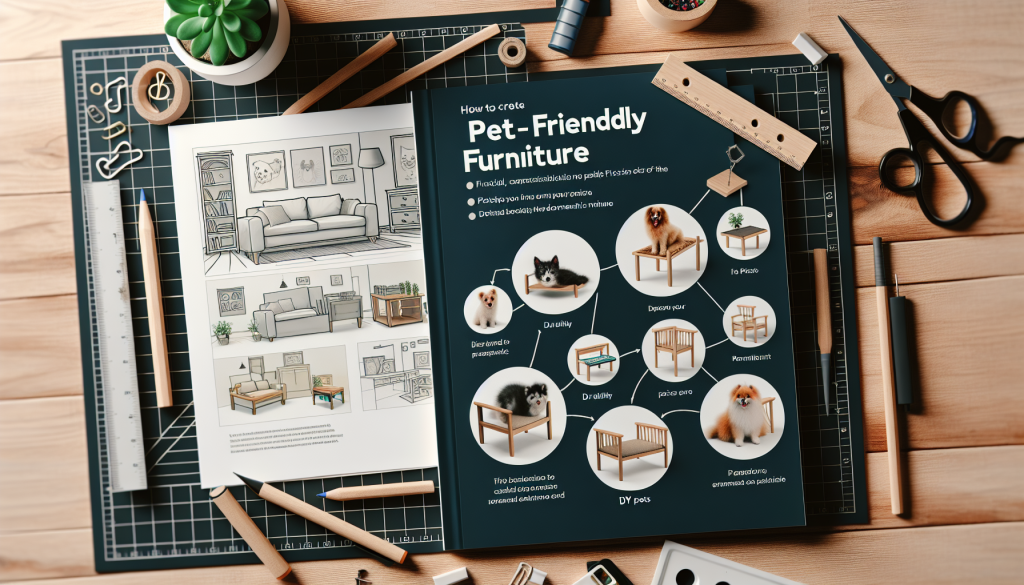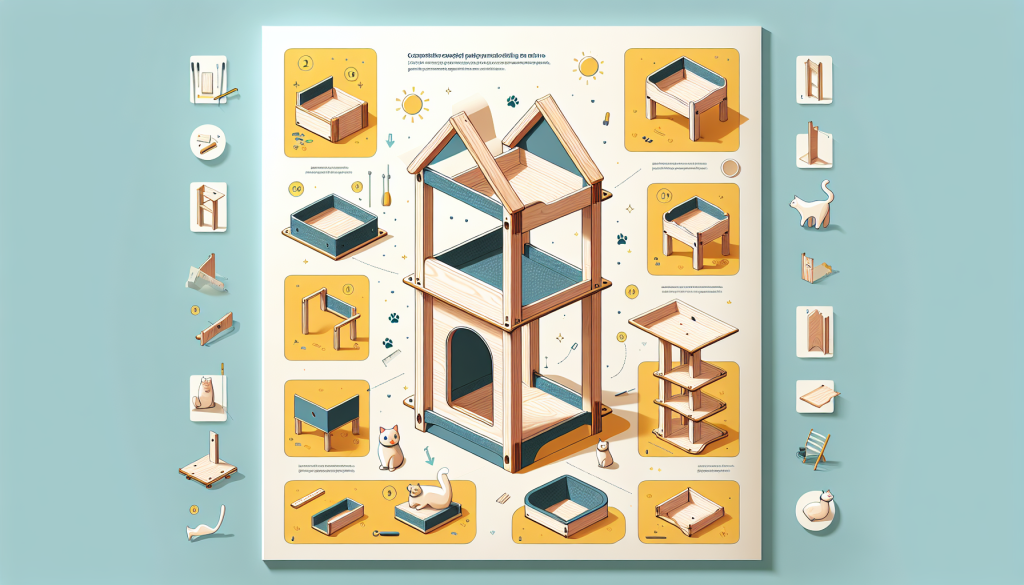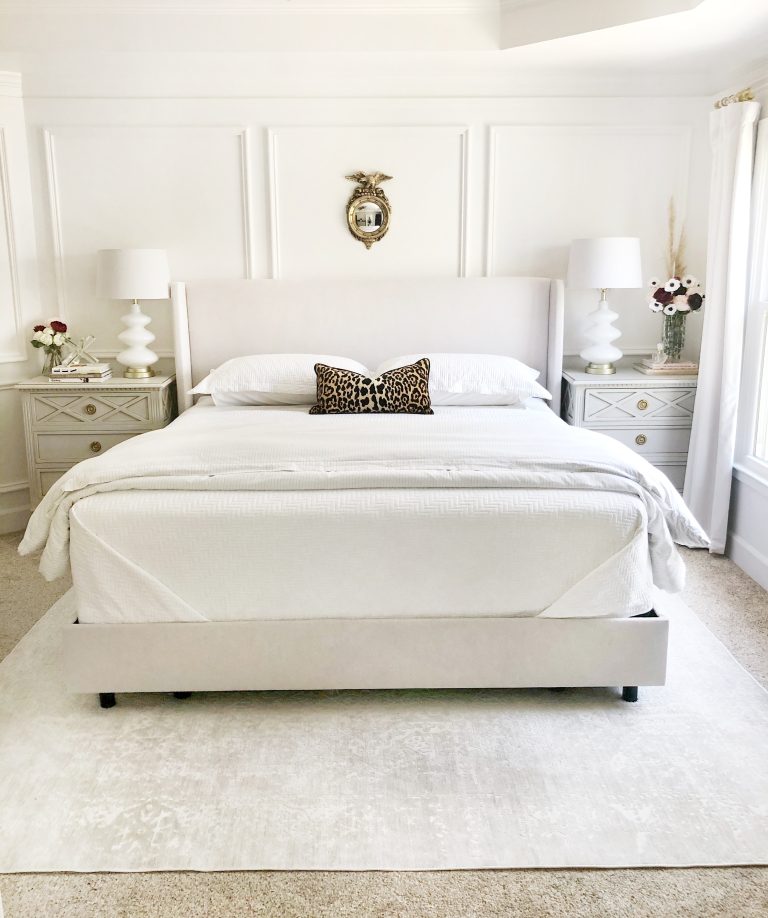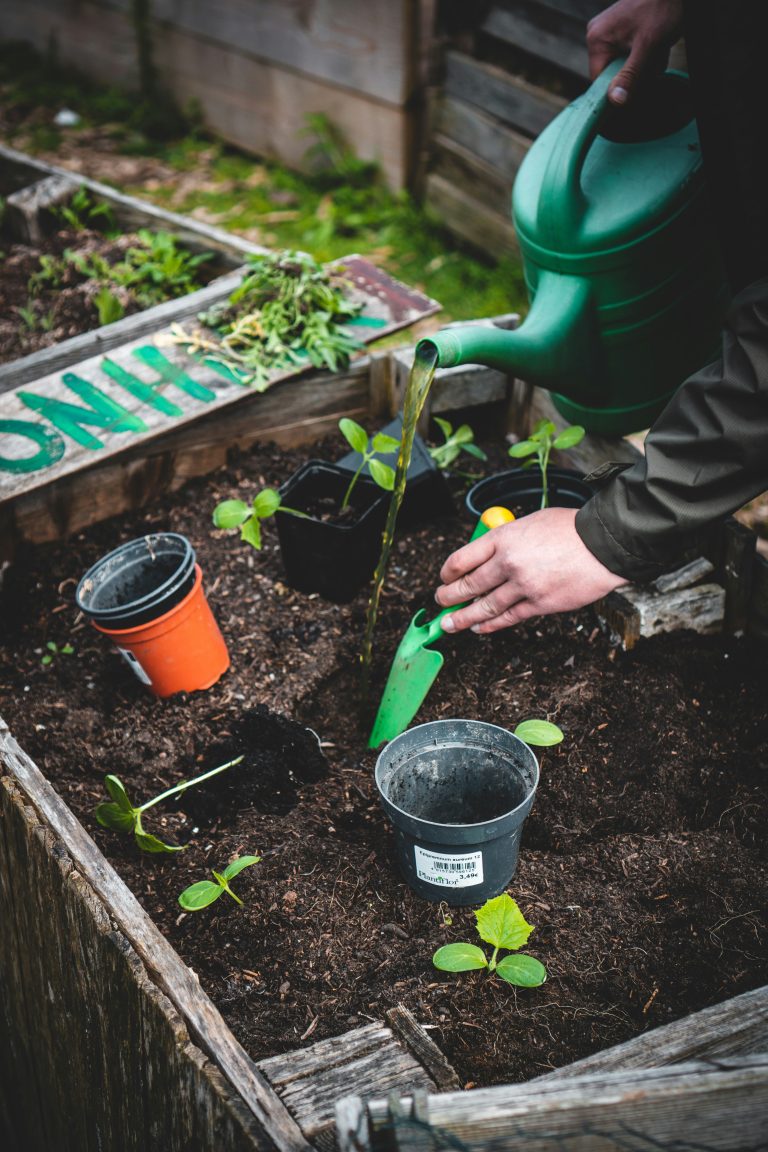Are you tired of constantly replacing and repairing your furniture due to your furry friend’s impact? Look no further! In this article, we will unveil the ultimate solution to your problem – building a DIY pet-friendly furniture piece. Say goodbye to scratched surfaces and torn upholstery as we guide you through the process of creating a durable and stylish piece that both you and your pet will love. With just a few simple steps and materials, you can finally have furniture that withstands the wear and tear of your four-legged friend. So roll up your sleeves and get ready to transform your space into a haven for both you and your beloved pet.

Table of Contents
ToggleChoosing the Right Material
When it comes to building a DIY pet-friendly furniture piece, choosing the right material is crucial. You want a material that is both durable and safe for your furry friend. Here are some considerations for pet-friendly materials:
Considerations for Pet-friendly Materials
First and foremost, you need to consider the material’s resistance to scratches and pet hair. Pets can be quite playful and energetic, so it’s important to choose a material that can withstand their natural behaviors without showing signs of wear and tear too quickly.
Another consideration is the material’s ability to repel odors. Let’s face it, pets can sometimes leave behind lingering smells. Having furniture made from materials that are easy to clean and don’t absorb odors can make a significant difference in keeping your living space fresh and pleasant.
Pet-friendly Materials to Use
There are several pet-friendly materials that you can consider for your DIY furniture project. One popular option is microfiber fabric. Microfiber is known for its stain resistance, durability, and ease of cleaning. It’s a great choice for upholstery because it repels pet hair and resists scratches.
Another material to consider is leather. Genuine leather, in particular, is resistant to both pet scratches and stains. However, keep in mind that it may require more maintenance and upkeep compared to other materials. Faux leather can also be a good alternative as it provides a similar look and feel without the same level of maintenance.
If you prefer a natural and eco-friendly option, you can choose furniture made from materials such as hemp, wool, or organic cotton. These materials are generally pet-friendly, as they are hypoallergenic and resistant to odors.
Designing for Pet Comfort
Designing your DIY pet-friendly furniture piece with your pet’s comfort in mind is essential. After all, you want your furry friend to enjoy lounging and relaxing on their special piece of furniture. Here are some considerations for creating a comfortable space for your pet:
Size and Space Considerations
When determining the size of your pet-friendly furniture piece, it’s important to take into account the size and breed of your pet. If you have a large dog, for example, you’ll need to ensure that the furniture has enough space to accommodate their size comfortably.
Additionally, consider the available space in your home. You want to make sure that the furniture fits well in the designated area without obstructing movement or causing any tripping hazards.
Comfortable Cushions and Upholstery
Choosing comfortable and supportive cushions is key to ensuring your pet’s comfort. Look for high-quality foam that will maintain its shape and provide adequate support for your pet’s body.
When it comes to upholstery, opt for a fabric that is soft and cozy, providing a pleasant texture for your pet to snuggle into. It’s crucial to choose materials that are pet-friendly and resistant to claw marks or stains.
Secure and Stable Structure
Creating a furniture piece with a secure and stable structure is essential for your pet’s safety. Pets can be quite active, and you want to make sure that the furniture can withstand their energy without tipping over or collapsing.
Reinforce the furniture with sturdy materials and consider adding support beams or additional bracing where needed. This will ensure the piece’s stability, providing peace of mind for both you and your pet.
Making it Easy to Clean
Let’s face it, pets can sometimes make a mess. Whether it’s shedding fur or the occasional accident, having furniture that is easy to clean is a must. Here are some features to consider when it comes to cleaning and maintenance:
Removable and Washable Covers
Having removable and washable covers for your pet-friendly furniture is a game-changer. It allows you to easily remove any dirt, fur, or stains and throw them in the washing machine for a thorough clean. Look for furniture designs that offer removable covers or consider adding this feature during your DIY construction.
When choosing fabric for the covers, opt for materials that are machine washable and can withstand frequent washes without losing their quality or color. This will make your life much easier when accidents happen and make it simpler to keep your furniture looking and smelling fresh.
Stain-Resistant Fabrics
In addition to removable and washable covers, another option to consider is stain-resistant fabrics. These fabrics are specially treated to repel liquids and prevent stains from setting in. This can be especially beneficial when it comes to dealing with pet accidents or spills.
Stain-resistant fabrics make cleaning a breeze, as most stains can be easily wiped away with a damp cloth or sponge. Just be sure to follow the manufacturer’s instructions for cleaning and maintenance to ensure the longevity of the fabric.
Including Pet-Friendly Features
To truly make your DIY pet-friendly furniture piece stand out, consider incorporating some special features that cater to your pet’s needs. Here are a few ideas to get you started:
Built-in Pet Beds or Nooks
Having a built-in pet bed or nook within the furniture piece is a great way to provide your furry friend with a cozy and dedicated space of their own. This can be a recessed area within a sofa or a raised platform on a bookshelf, depending on the type of furniture you are building.
Make sure to choose a comfortable cushion or mattress for the bed or nook and line it with a washable cover. This will make it easy to keep the space clean and fresh, ensuring your pet’s utmost comfort.
Scratch-Resistant Surfaces
Pets love to scratch and dig, and furniture is often a victim of their natural behavior. To protect your DIY furniture piece from scratches, consider incorporating scratch-resistant surfaces. This can be done by using materials such as sisal, which is a durable and natural fiber that is resistant to scratching.
Alternatively, you can apply protective films or coatings to surfaces that may be prone to scratching. These coatings provide an extra layer of protection, preventing your furniture from becoming a scratching post.
Toy and Treat Storage
Pets often come with a multitude of toys and treats, so having storage options within your DIY furniture piece can help keep your space organized. Consider incorporating built-in compartments, drawers, or baskets that can hold your pet’s belongings.
Having dedicated storage space will not only keep your home tidy but also make it convenient for you and your pet to access their toys and treats. Plus, it adds a nice touch of functionality to your furniture piece.
Ensuring Durability and Safety
When creating a DIY pet-friendly furniture piece, durability and safety are of utmost importance. You want to build something that can withstand the test of time while ensuring the well-being of your beloved pet. Here are some factors to consider:
Sturdy Construction and Reinforcements
Pets, especially larger ones, can put a lot of stress on furniture. To ensure the durability and longevity of your DIY piece, prioritize sturdy construction and reinforcements. Use high-quality materials such as solid wood or metal for the frame, and opt for strong joinery techniques such as mortise and tenon or dowel joints.
Consider adding additional reinforcements where needed, especially in areas that may experience higher levels of stress. This will prevent your furniture from becoming wobbly or unstable over time.
Non-Toxic Finishes and Adhesives
Pets, being curious creatures, may occasionally chew or lick the furniture. To keep them safe, choose non-toxic finishes and adhesives for your DIY project. Avoid any potentially harmful chemicals or substances that could be harmful if ingested.
Look for finishes and adhesives that are labeled as pet-friendly or non-toxic. This ensures that even if your pet decides to have a taste, they won’t be harmed by any toxic substances.
Avoiding Hazardous Features
Pets can be quite mischievous, so it’s important to eliminate any potentially hazardous features that could harm them. Avoid sharp edges or corners that could cause injuries, and ensure that all fasteners and hardware are securely attached and not protruding.
Additionally, be mindful of any small parts or decorations that could be swallowed by your pet. It’s always better to err on the side of caution and keep your furniture design simple and safe.
Getting Started with DIY
Now that you have a clear understanding of what to consider when building a pet-friendly furniture piece, it’s time to get started! Here are a few steps to help you begin your DIY journey:
Measuring and Planning
Before diving into construction, take accurate measurements of the space where your furniture will be placed. Consider the dimensions of your pet as well to ensure they will be comfortable on the furniture.
Next, sketch out a rough design or find inspiration online for the type of furniture piece you want to build. Take into account all the considerations discussed earlier, such as size, comfort, and pet-friendly features.
Gathering Tools and Supplies
Once you have a solid plan in place, gather all the necessary tools and supplies for your DIY project. This may include items such as a saw, drill, screws, sandpaper, and paint or stain if you choose to customize your furniture piece.
Make sure you have all the materials needed for construction, such as wood, upholstery fabric, foam, and any additional hardware required. Having everything on hand will streamline the building process and prevent delays.
Choosing the Right Plans or Templates
If you’re new to DIY projects, it’s helpful to find pre-existing plans or templates that you can follow. Many websites and books offer step-by-step instructions and measurements for building various types of furniture.
Alternatively, if you’re feeling confident, you can create your own plans based on your design concept. Just be sure to take accurate measurements and consider the functionality and safety of the furniture piece.
Step-by-Step Construction
Now it’s time to roll up your sleeves and start constructing your DIY pet-friendly furniture piece. Here’s a general guide to help you through the construction process:
Cutting and Preparing Materials
Start by cutting all the necessary materials according to your measurements and plans. Take your time and ensure each piece is cut accurately and properly sanded to prevent any rough edges.
If you’re using upholstery fabric, foam, or any other soft materials, cut them to the appropriate sizes as well. This will make it easier to assemble the furniture later on.
Assembling the Frame
Once all the materials are prepared, begin assembling the frame of your furniture piece. Follow your plans or templates and use appropriate joinery techniques to ensure a sturdy structure.
Take your time during this step and double-check all the measurements and angles. It’s important to have a solid and stable frame that can support both your pet’s weight and the weight of the furniture itself.
Attaching Cushions and Upholstery
Once the frame is complete, it’s time to attach the cushions and upholstery. Place the foam or padding onto the frame, ensuring it fits snugly. Secure it in place using adhesive or upholstery tacks, depending on your chosen method.
Next, carefully apply the upholstery fabric, starting from one side and working your way around. Use a staple gun or fabric-specific adhesive to secure the fabric, making sure it is taut and free of wrinkles.
If you’re building a furniture piece with removable covers, now is the time to attach the covers using buttons, zippers, or Velcro. Ensure they are securely fastened but easily removable for cleaning purposes.
Optional Customizations
With the construction complete, it’s time to add personalized touches to your DIY pet-friendly furniture piece. Here are some ideas for customization:
Painting or Staining the Piece
If you prefer a certain color or want to match your furniture to your existing decor, consider painting or staining the piece. Use pet-safe paint or stain and follow the manufacturer’s instructions for application.
You can also get creative and add patterns or designs to your furniture using stencils or decals. Just make sure to use non-toxic materials and allow ample time for the paint or stain to dry and cure before allowing your pet near the furniture.
Adding Personalized Decor
Incorporating personalized decor can enhance the aesthetic appeal of your DIY furniture piece. Consider adding nameplates, engraved designs, or even your pet’s picture onto the furniture.
Be sure to use materials that are safe and non-toxic, avoiding any sharp edges or small parts that could pose a hazard to your pet. Personalized decor adds a sentimental touch and makes the furniture truly unique.
Incorporating Unique Features
Think outside the box and consider adding unique features that cater specifically to your pet’s needs and preferences. This can include built-in water or food bowls, hiding spots, or climbing elements.
Keep in mind your pet’s size, breed, and behavior when incorporating these features. They should enhance the functionality and enjoyment of the furniture without compromising its overall stability or safety.
Tips for Pet Training and Use
Once your DIY pet-friendly furniture piece is complete, it’s time to introduce it to your furry friend and ensure they use it appropriately. Here are some helpful tips for pet training and use:
Introducing the Furniture to Your Pet
When introducing your pet to the new furniture, use positive reinforcement and encourage them to explore and interact with it. Place treats or toys on the furniture to make it an inviting and exciting space for them.
If needed, gently guide your pet onto the furniture and reward them with praise or treats when they show interest or use it correctly. Take your time and be patient, as it may take some time for your pet to adjust to the new piece.
Encouraging and Rewarding Proper Use
Whenever your pet uses the furniture correctly, be sure to reward and praise them. Positive reinforcement is a powerful tool in pet training, and it will help them associate the furniture with positive experiences.
If your pet starts displaying unwanted behaviors, such as scratching or chewing the furniture, redirect their attention to appropriate toys or scratching posts. Consistency in training and encouragement will help reinforce the desired behavior.
Addressing Potential Behavior Issues
If your pet continues to show undesired behaviors despite your training efforts, it’s important to identify the underlying cause and address it appropriately. Consult with a professional trainer or behaviorist to help identify and modify any problem behaviors.
It may also be helpful to make adjustments to the furniture to discourage the unwanted behaviors. For example, adding double-sided tape to the edges can deter scratching, while applying a pet-safe deterrent spray can discourage chewing.
Maintenance and Care
Regular maintenance and care are essential to keep your DIY pet-friendly furniture piece in top condition. Here are some tips to ensure your furniture remains clean and safe for your pet:
Regular Cleaning and Vacuuming
To prevent dirt, pet hair, and allergens from accumulating on your furniture, it’s important to establish a regular cleaning routine. Use a vacuum cleaner with a pet hair attachment to remove any loose hair or debris from the upholstery.
For washable covers, remove and launder them according to the manufacturer’s instructions. Regularly spot clean any stains or spills as soon as they occur to prevent them from setting in.
Inspecting for Wear and Tear
Periodically inspect your furniture for any signs of wear and tear. Check for loose screws, weak joints, or any other structural issues that may compromise the stability of the piece.
Additionally, examine the upholstery for any tears, fraying, or signs of damage. Address any issues promptly to prevent further damage and ensure the safety of your pet.
Repairing and Replacing Parts
If you come across any damaged or worn-out parts during your inspection, take the necessary steps to repair or replace them. Tighten any loose screws or bolts, reinforce weak joints, and patch or replace damaged upholstery as needed.
It’s essential to address any repairs promptly to maintain the integrity of the furniture and prevent potential accidents or injuries. Regular maintenance and proactive repairs will extend the lifespan of your pet-friendly furniture piece.
Building a DIY pet-friendly furniture piece requires careful consideration of your pet’s needs and behaviors. By choosing the right materials, designing for pet comfort, making it easy to clean, and incorporating pet-friendly features, you can create a space that both you and your furry friend will love. Remember to prioritize durability and safety, follow a step-by-step construction process, and personalize your furniture according to your preferences. With proper training, maintenance, and care, your DIY furniture piece will provide lasting comfort and enjoyment for your pet.







